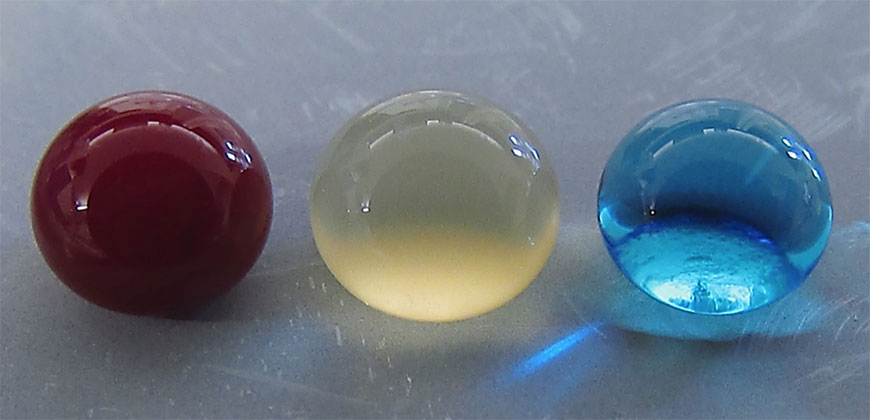
Blood, plasma and water droplets beading on a superomniphobic surface. CSU researchers have created a superhemophobic titanium surface, repellent to blood, that has potential applications for biocompatible medical devices.
Researchers have developed a new method to produce medical implants by using a specially grown, superhemophobic titanium surface that is extremely repellent to blood.
Engineers from Colorado State University have developed the new material, which could be used for stents, catheters and tubing. The new material is expected to lower the risk of rejection by the body.
The experiment started with the engineers growing chemically altered surfaces that act as barriers between sheets of titanium and blood.
They then conducted experiments showing very low levels of platelet adhesion, a biological process that leads to blood clotting and eventual rejections of a foreign material.
Arun Kota, assistant professor of mechanical engineering and biomedical engineering, explained that originally the use of materials repellent to blood seemed counterintuitive.
“What we are doing is the exact opposite,” Kota said in a statement. “We are taking a material that blood hates to come in contact with, in order to make it compatible with blood.”
However, Kota explained that the surface created is so repellent that blood is ‘tricked’ into believing that there is virtually no foreign material there at all.
Ketul Popat, associate professor of mechanical engineering and biomedical engineering, said that the undesirable interaction of blood with foreign materials is an ongoing problem in medical research, and overtime stents can form clots, obstructions and lead to heart attacks or embolisms.
“The reason blood clots is because it finds cells in the blood to go to and attach,” Popat said in a statement. “Normally, blood flows in vessels.
“If we can design materials where blood barely contacts the surface, there is virtually no chance of clotting, which is a coordinated set of events. Here, we’re targeting the prevention of the first set of events.”
After analyzing variations of titanium surfaces, including different textures and chemistries, the researchers compared the extent of platelet adhesion and activation.
The engineers will now conduct follow-up experiments on fluorinated nanotubes, which offered the best protection against clotting. They will also continue examining other clotting factors.
The study was published in Advanced Healthcare Materials.




